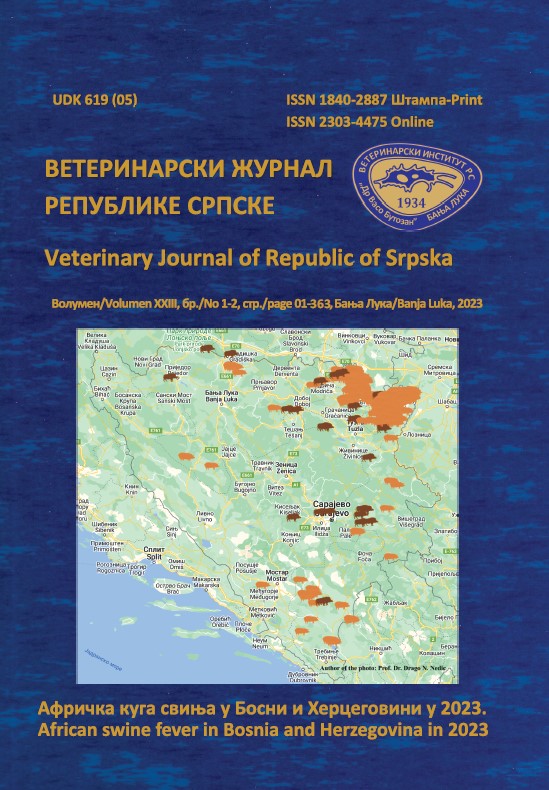ТHE SIGNIFICANCE OF CERULOPLASMIN AND C-REACTIVE PROTEIN AS POSSIBLE MARKERS FOR THE DIAGNOSIS OF MYXOBOLOUS INFECTION CAUSED BY Myxobolus cerebralis IN RAINBOW TROUT (Oncorhynchus mykiss)
DOI:
https://doi.org/10.7251/VETJEN2301032ZAbstract
Myxobolus cerebralis is the etiological agent of one of the most devastating diseases (Whirling disease) in salmonids. It belongs to subphylum Myxozoa which possesses the highest susceptibility to the rainbow trout (Oncorhynchus mykiss). Acute phase proteins as an essential component of normal homeostasis are well defined and are presently used as a diagnostic and prognostic marker in human and animal pathology for evaluation of infection and inflammation. In piscine medicine the importance and the function of acute phase proteins still has not been fully determined. Furthermore, parasitic infections are more difficult to diagnose than bacterial and viral infections due to the lack of specific diagnostic tools therefore the change in the levels of some acute phase proteins could possibly be used as an alternative marker for myxobolosis. Further research is still needed to develop an understanding of the diagnostic significance of acute phase proteins in fish and the differentiation of their values in different types of disorders. The present study evaluated the modulation of ceruloplasmin and C-reactive protein following inflammatory stimulus by natural infection of Myxobolus cerebralis in rainbow trout (Oncorhynchus mykiss). In the research, biochemical tests and enzyme-linked immunosorbent assay were carried out. The test material was a diseased rainbow trout with a mortality rate of 45%. In the future, acute phase proteins have a real potential to become widely used as diagnostic tools in piscine medicine, as the evaluation of their levels can help better diagnosis and treatment, especially when it occurs during illness. Measurement of C-reactive protein concentration in trout may be used useful as a bioindicator of the health condition of this species. Further research is still needed to develop an understanding of the diagnostic significance of acute phase proteins in fish and the differentiation of their values in different types of disorders.

